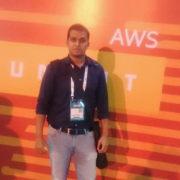

AWS Elastic Disaster Recovery and NetApp SnapCenter are two prominent products in the disaster recovery market. AWS Elastic Disaster Recovery seems to have the upper hand in handling large-scale deployments efficiently, while NetApp SnapCenter excels in integration capabilities.
Features: AWS Elastic Disaster Recovery provides comprehensive recovery options, high scalability, and flexibility. It can handle large-scale deployments efficiently. NetApp SnapCenter offers robust integration with various storage solutions, ease of managing backup and recovery tasks, and detailed documentation.
Room for Improvement: AWS Elastic Disaster Recovery could benefit from more intuitive configuration processes, enhanced reporting features, and better user guidance. NetApp SnapCenter needs improved speed and performance, performance optimization in large deployments, and better user experience for large-scale use.
Ease of Deployment and Customer Service: AWS Elastic Disaster Recovery is relatively straightforward to deploy but demands a steep learning curve. Customer service receives high marks for responsiveness. NetApp SnapCenter has a more complex deployment process requiring specialized knowledge, but users appreciate the detailed documentation and support quality.
Pricing and ROI: AWS Elastic Disaster Recovery offers competitive pricing with a clear cost structure, delivering substantial ROI, especially for large enterprises. NetApp SnapCenter has higher initial setup costs but provides value through its extensive feature set and reliable performance.
| Product | Market Share (%) |
|---|---|
| AWS Elastic Disaster Recovery | 0.6% |
| NetApp SnapCenter | 0.7% |
| Other | 98.7% |


| Company Size | Count |
|---|---|
| Small Business | 5 |
| Midsize Enterprise | 4 |
| Large Enterprise | 7 |
| Company Size | Count |
|---|---|
| Small Business | 8 |
| Midsize Enterprise | 9 |
| Large Enterprise | 11 |
CloudEndure Disaster Recovery enables real-time replication and rapid recovery to enhance organizational resilience. Key features include block-level data replication, ease of use, cost-effectiveness, and automated recovery orchestration. Users benefit from increased efficiency, improved workflows, and enhanced data management, significantly improving organizational performance and business continuity.
Unified, scalable platform for application-consistent data protection and clone management. This software simplifies backup, restore, and clone lifecycle management with application-integrated workflows.
We monitor all Backup and Recovery reviews to prevent fraudulent reviews and keep review quality high. We do not post reviews by company employees or direct competitors. We validate each review for authenticity via cross-reference with LinkedIn, and personal follow-up with the reviewer when necessary.